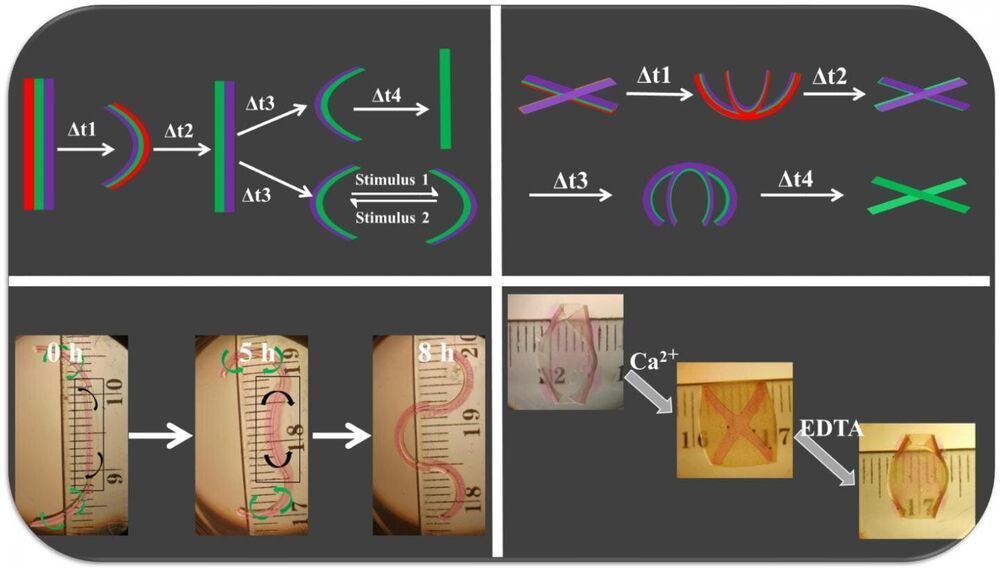Tissue engineering has long-depended on geometrically static scaffolds seeded with cells in the lab to create new tissues and even organs. The scaffolding material—usually a biodegradable polymer structure—is supplied with cells and the cells, if supplied with the right nutrients, then develop into tissue as the underlying scaffold biodegrades. But this model ignores the extraordinarily dynamic morphological processes that underlie the natural development of tissues. Now, researchers at the University of Illinois Chicago have developed new 4D hydrogels—3D materials that have the ability to change shape over time in response to stimuli—that can morph multiple times in a preprogrammed or on-demand manner in response to external trigger signals. In a new Advanced Science study, the UIC researchers, led by Eben Alsberg, show that these new materials may be used to help develop tissues that more closely resemble their natural counterparts, which are subject to forces that drive movement during their formation.
